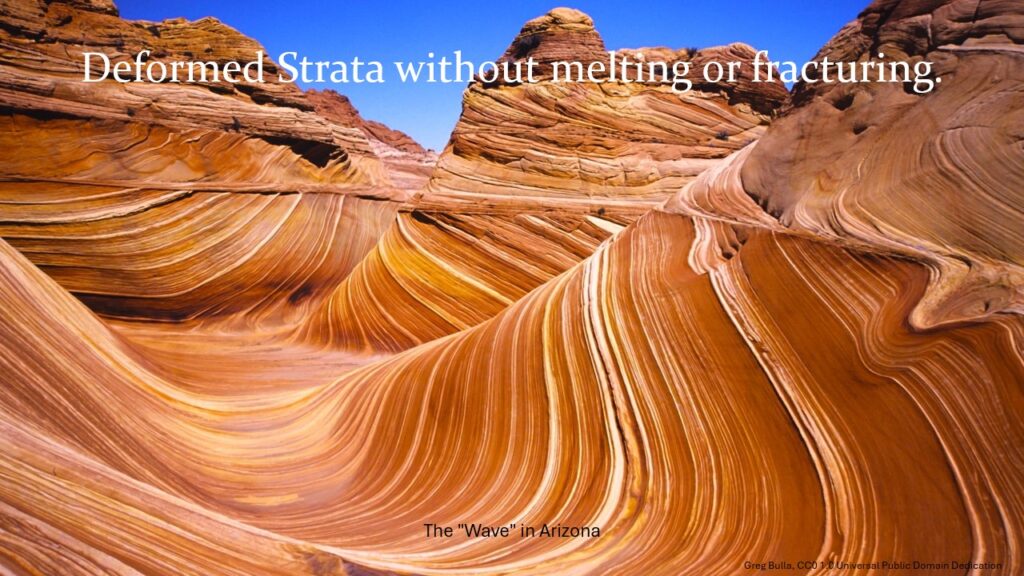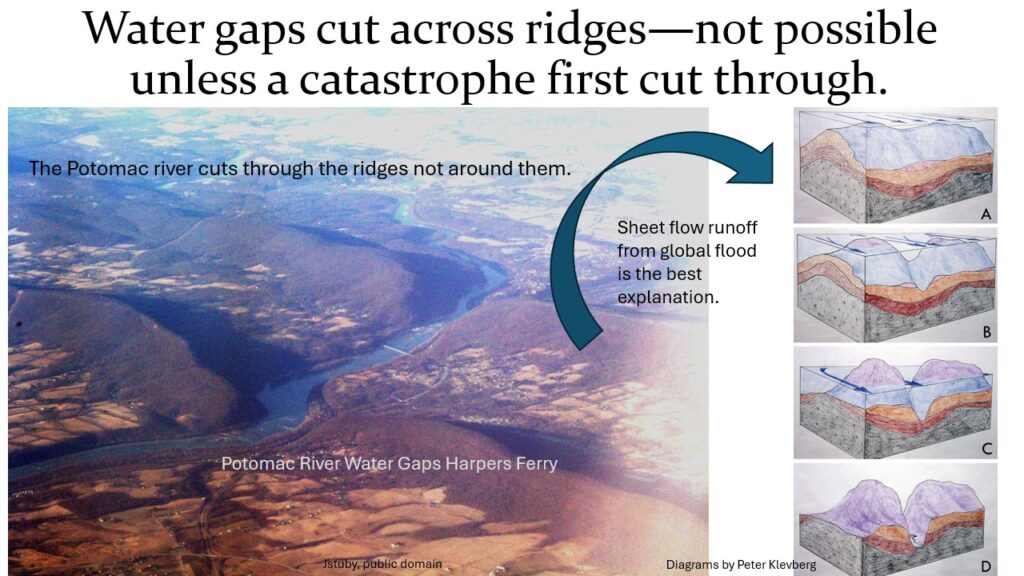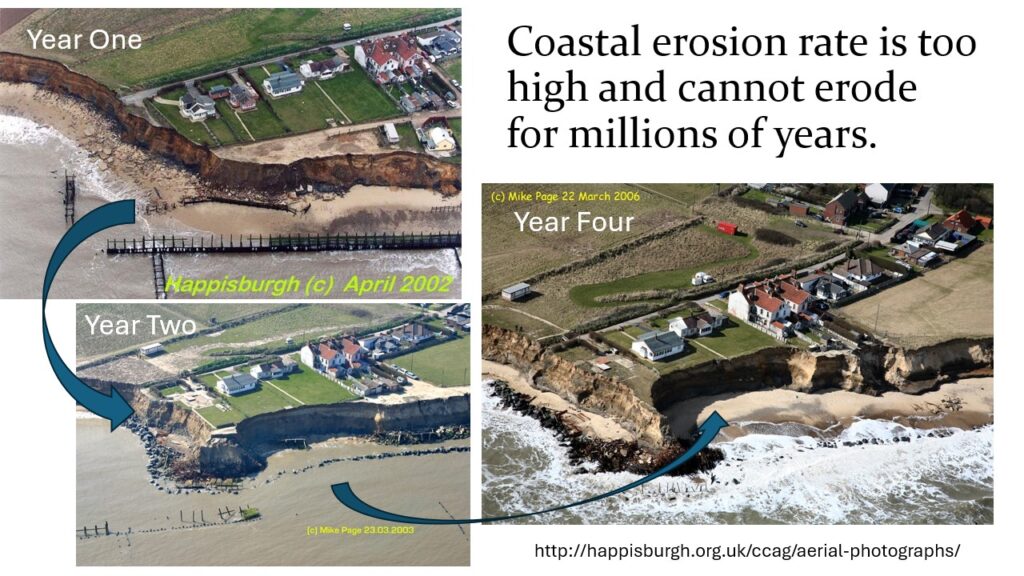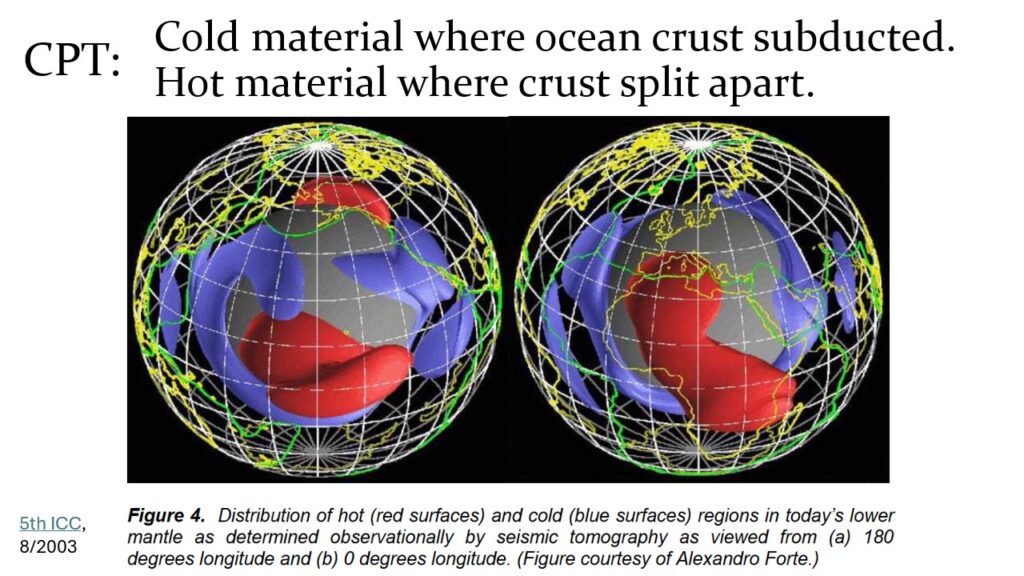Genesis 1:9-10 And God said, “Let the waters under the heavens be gathered together into one place, and let the dry land appear.” And it was so. God called the dry land Earth, and the waters that were gathered together he called Seas. And God saw that it was good.
2 Peter 3:5-6 For they deliberately overlook this fact, that the heavens existed long ago, and the earth was formed out of water and through water by the word of God, and that by means of these the world that then existed was deluged with water and perished.

Discussion
The Challenge to Secular Geology
The topic of geology is closely aligned with the question of the age of the earth. In fact, of the 101 evidences for a young earth on Creation.com, over half of those evidences (53) are either directly geological (39) or are based on radiometric dating (14). Just a quick survey of the evidences reveals tremendous gaps in the explanatory power of conventional geology. There are numerous examples of tightly bent strata without any sign of melting or fracturing, such as the Kaibab Upwarp, and “the wave” in Arizona, which must have been deformed when the sediments were still pliable.

There are numerous examples of polystrate fossil tree trunks that are embedded in multiple different sedimentary layers, as though the tree would not have rotted away when each layer supposedly took thousands or even millions of years to accumulate. And the supposed thousands of years required to petrify wood and other fossils can actually occur naturally in just a few years or even faster. In fact, if thousands of years were required to petrify wood, it is more likely the wood would rot away before it could be preserved.

Talking about time, there is now abundant evidence that hydrocarbon deposits of coal and oil can form quickly (in weeks to months for coal and in years for oil) and the supposed long ages of burial would, in fact, hinder the formation of coal. The pressure in oil and gas wells is an indication of recent formation since the pressure would be expected to fall significantly in millions of years even through supposedly “impermeable” layers of stone.

The very mechanisms that conventional geology relies on to explain the formation of the geologic sedimentary column is actually scouring the landscape far too fast for the supposed millions of years these sediments have existed. The conventional age of the world’s continents is 2.5 billion years or more, but the rate of erosion would have leveled some of the continents to near sea level in just millions of years. According to calculations performed by a number of geologists, North America should have been leveled in just 10 million years, assuming that erosion has occurred at the current average rate.
Several geologic features caused by erosion actually cast further doubt on the supposed conventional geological time frames. Water gaps, which occur worldwide, are gorges that cut directly though mountain ranges where current rivers run. Such water gaps are labeled ‘discordant drainage systems’ by geologists because they don’t fit the expected erosion pattern for rivers over long ages.

Coastal erosion in many locations is measured in several inches or even feet per year such as Cape Hatteras in North Carolina and erosion along the Yorkshire coast in the UK. In fact, at the current rates of erosion since the UK island was supposedly formed tens of millions of years ago, the Yorkshire coast would move 1,500 km inland, which is more than the entire width of England and Ireland. Obviously, the English coast has not been eroding for millions of years, and its very existence suggests it is far younger than the supposed millions of years.

In 2015 the rate of arch failure in Arches National Park was determined to be approximately one arch per year (43 arches had collapsed in the previous 45 years). If the arches continue to fail at this approximate rate, then the ~2000+ arches in the park will be gone in less than 3000 years. How could these arches have lasted for millions of years prior to the modern era?

When it comes to geology there are far more questions than answers, and the smattering of issues we have covered in this short discussion are just the “tip of the proverbial iceberg.” Rather than continue to highlight the obvious issues with conventional geology, the real question is: if it did not take millions or billions of years to build up the geologic column, then how did all that sediment get laid down in the first place, especially since the continental tectonic plates all “float” in the mantle, rising above the oceans?
Catastrophic Plate Tectonics—a better solution

Understanding how the sediments, some of which are literally miles deep, have been deposited is the crux of the question. Obviously, given just the few issues discussed above and others addressed in the 101 evidences for a young earth, it is highly unlikely that these sediments were accumulated gradually, over long ages driven by processes that are observable today. The only other alternative is that the sediments were laid down over a relatively short period of time as the result of world altering, catastrophic processes that can only be forensically determined using models and analyses to understand the mechanisms involved.
There are a few different models regarding catastrophic geological processes that might explain the geological column, but my personal preference is one that is referred to as Catastrophic Plate Tectonics (CPT). CPT was first proposed over a century ago by Antonio Snider, but it was not until the modern era that the theory could be “tested” using the best available information about earth materials and the most modern computational facilities along with the ability to model Finite Element Models (FEA) with millions of elements.
In the mid-nineteen eighties, Dr. John Baumgardner, working as a geophysicist at Los Alamos National Laboratory, developed the world’s first FEA 3D model of the globe, which he used to model and evaluate the concept of CPT over the next two decades as a possible mechanism of the year-long, global flood described in the book of Genesis and often referred to as Noah’s flood. Since then, he and others have continued to develop the basic concept and extend the original modeling and analysis.


The primary physical driver for the mechanism of CPT was catastrophic subduction, that is an uncontrolled sinking, of the ocean crust into the earth’s mantle due to a combination of material properties of the crust and mantle that may have been triggered by one or more asteroids striking the boundaries between the ocean crust and continental plate. The subduction may have been enhanced by additional heating of the mantle due to increased radioactive decay. Most of the relevant papers regarding CPT can be found at globalflood.org under the CPT page. A recent summary and defense of CPT by Timothy Clarey is available on the Creation Ministries International (CMI) website as a reprint from the Journal of Creation, which is published by CMI.


The CPT model not only explains the current continental configuration and major geological structures (mountains as well as flood “run-off” features), but many of the Biblical features of the flood, including the 40 days of rain, the fountains of the deep, and the “windows” of heaven. When the ocean crust was split apart and sunk beneath the pre-flood Pangean super-continent, the ocean was exposed to hot mantle material that would create geysers of very hot water and steam that would shoot up into the upper atmosphere and be distributed around the globe due to the upper winds, which would then fall back to the earth as heavy rain for many weeks.
Other features of the Biblical account include the overflow of the tallest mountains at the height of the flood, as well as the duration of the flood being about one year. CPT can account for these effects after the original hard ocean crust had sunk into the earth’s mantle, the hot and less dense mantle material rose up and the continental plates, being solid and dense, sunk down into the mantle and beneath the ocean waters allowing the sediments to be deposited on the continents by the ocean currents.
The time required for all the geological processes to stabilize enough to enable land to appear so Noah and his family could leave the ark would easily have required many months. First, as the exposed mantle material began to cool and solidify, the hardening material would both slow the movement of the continents and cause the continental plates to rise since the continents are less dense than the hardened ocean crust. Finally, the mountains that exist now were thrust up as the continental plates began to slow down after their “sprint” across the globe, much like a throw rug will bunch up when slid hard into a wall. The pre-flood “mountains” were likely significantly lower than those of today, having been created by God using different geologic processes than those involved in the flood. Consequently, the lower, pre-flood mountains could easily have “slid” beneath the “rising” ocean waters.

One other feature that is not often considered is that CPT also explains the apparently rapid reversals of the earth’s magnetic field (see the Age of the Earth topic area for more discussion). That topic is covered in some detail in the book “Earth’s Mysterious Magnetism: and that of other celestial orbs.” The book is available on Amazon as a kindle book or from Creation Research Society (CRS) in printed and e-book formats.
Earth’s Mysterious Magnetism
This book’s description on the CMI store site is a good summary of what to expect: Dr. Russ Humphreys was not the first creationist to point out that the earth’s magnetic field’s decay pointed to a young age. But over the last few decades, he has refined this model in many areas, and made successful predictions that contradicted those of evolutionary dynamo models.
In this e-book, he explains how the magnetic fields are generated in Earth and other planets. The creationist model explains why magnetic fields exist in slowly rotating planets like Mercury, which was a surprise to evolutionists. The Humphreys model also successfully predicted the fields of Uranus and Neptune, before they were confirmed by Voyager missions, to the chagrin of evolutionists.
Older creationist works were skeptical of magnetic field reversals. But Dr. Humphreys showed that they must have occurred, and occurred rapidly. Rapid reversals were later confirmed in thin, thus fast-cooling, lava flows.